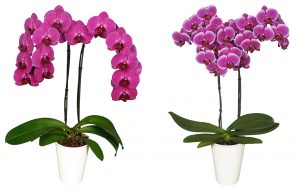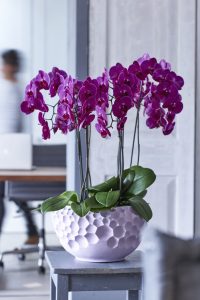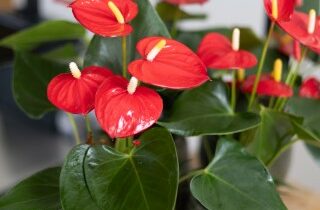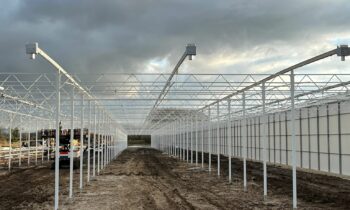When buying a flowering plant, the consumer is influenced by several factors. The most determining purchase factor is the colour of the flowers. A preference for a certain colour is not only very personal, but also depends on the use of the plant and often differs from one country to another.
In contrast to the sales of mixed Phalaenopsis, with sales according to variety name we have gained more insight into customers’ preferences for certain colours. This information is very valuable for all the parties in the chain and can be used to adapt the offer better to the wishes of the consumer.
Top 3 colours
The three main colours that are sold the whole year round based on variety names are white, (pastel) pink and dark purple. Yet the demand for dark purple is difficult to meet due to limited availability, but with the introduction of Anthura Stellenbosch and Anthura Pretoria we are about to change this.

Anthura Stellenbosch and Anthura Pretoria

Anthura Stellenbosch
Stellenbosch
This newcomer can be described best as “a variety with the X-factor that will make many consumers stop on the shop floor!”
This orchid has large, deep purple flowers, beautifully arranged on the stem. The plant measures 70 cm and has a flower size of more than 8 cm. For a high percentage of plants with two spikes the variety needs a sufficiently long growing phase, and is thus especially suitable for slightly heavier growers.
Pretoria
Pretoria stands for pure beauty; the flowers are velvety and have a deep purple colour with a soft white edge. Consumer panels have voted it a winner several times as most popular plant.
The plant measures 65 cm and has a flower size of 8 cm. With a normal cultivation duration of 46 weeks, the crop produces 80% of plants with two spikes.
If you don’t have these dark purple varieties in the nursery, ask your sales manager about availability and convince yourself.
Anthurinfo
This article is part of the Anthurinfo February 2017. Read all articles here.







